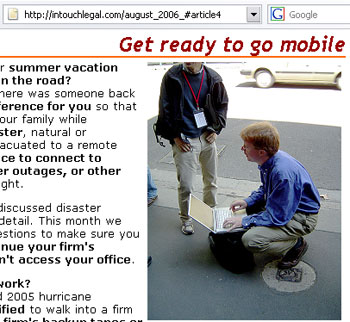[Liveblogged]
Jeffrey Veen: "Art is design without compromise"
But there are limitations in the medium we work in, not just technical issues but also having to unlearn the habits based on past limitations. The biggest limitations are the ones we impose on ourselves. We need to remember that the web is only ten years old and we don't especially know what we're doing yet!
With all the web 2.0 buzz there's a huge amount of material out there which looks good but it's terrible under the bonnet.
Aside: Remembering where we came from - Andy showed us the old favourite, blue robot. It reminds me just how much the blue robot grey leaf design inspired me. I love that design, the simplicity and minimalism...
How can we get people to engage with the sites/apps we're creating through the use of imagery and design? Look at CSS Zen Garden - it's not so much about proving that standards work, so much as showing that we need to have great design.
With the standards community's focus on code, sites with great design haven't always been appreciated.
We (WD06 attendees) are the majority - hopefully a vocal, passionate minority but still a minority. "The job is far from done." We need to keep going and perhaps try to be more inclusive and try to get more web workers into the standards world.
Why use magnolia instead of delicious? Well, hey, it looks nicer and it was designed by Zeldman and Jason Santa Maria.
"The web is not a power drill." Andy "...it's a series of tubes!" (Cam? via John Allsopp)
Developers working with designers... do they work together or does the designer just throw Photoshop mockups at the developers? Does it make sense to split everyone off to different areas? Well, no... we're all working on this together; Andy would encourage us to work on things together.
Andy tries to get the client into the creative process from the start. Get them thinking about the mood they want to create with their sites, what perception do they want their visitors to get when they come onto the site? Well, we should do that for ourselves. Andy keeps a scrapbook of things he likes - from magazines, flyers, whatever.
Just because the web isn't print doesn't mean we should learn from it. We shouldn't use the conventions of print but we should look at it. What's the semantic meaning of what we see on magazine pages? We don't see typography online that looks like magazine typography... shouldn't we be thinking about what we should bring onto the web?
Examples: discussion of the wonderful architecture in Sydney which preserves the old and combines with the new. Typography on buildings next to brickwork... "all of this is going on a few feet above your head"
Andy: No matter what it is you're doing on the web, what I'd like to see is us really thinking more about moving things forward now. Looking for inspiration from around the world, and looking in unrelated areas. The next time you're walkin gout and about, just find something - doesn't matter what it is - find something that inspires you. See how you can bring that back into the work you're doing that day or that week. Out there is this mass of opportunity for inspiration.
Q&A
Q: As well as print influencing web design, what about the fine arts?
A lot of the three dimensional stuff might be a bit hard to visualise..... to be honest we should probably be asking them.
my feeling is that we shouldn't be limiting ourselves just to what we know, and the idea of collaboration is really important. We should get people involved who are doing ceramics or jewellery or whatever; get them to bring in some of their process to the web.
Q: Should content drive design? When should it come into the design process?
I think it is completely wrong to come up with a design and pour it into the design. The content should drive the the way the design comes together. Content is absolutely vital right at the beginning - how can you select the right markup if you don't know what the content is going to be? Work with the document first, then we can do the dressing and create the emotional layout that can best describe it.
Q: What's your balance between inspiration and practicality? Balance between creative design and usability.
Yeah... if I want a power drill I want a power drill... I pull the trigger and it drills things. It's not a fashion statement - "I don't walk around with my big tool!" We should remember that even a drill is designed though.
We're not just limited to functionality, we can create objects of desire too. It's all a balance.
Q: IE7... how long is it going to be before we can forget about IE6?
I believe... it doesn't matter to me, because I don't take the view that things have to look the same across all browsers. My benchmark is standards-savvy browsers that work well. Set a level where things get simpler, ultimately resulting in plain text sent to browsers like Netscape 4 and IE5.2(Mac).
Final thing.... prize giveaway
"Andrew Krespanis.... I'd like to give you my pants!"
Andrew has won a pair of union jack boxer shorts signed by all the speakers.

